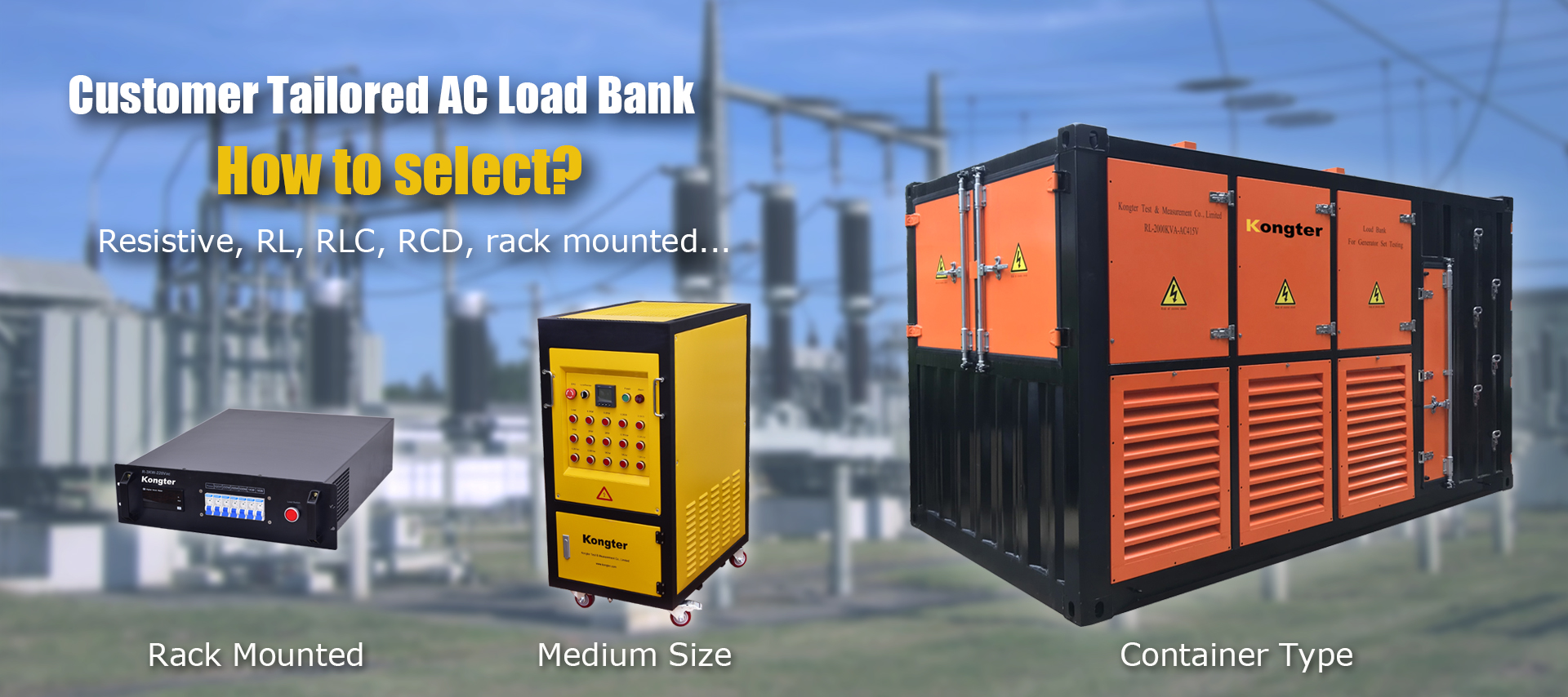Selecting the right AC load bank is essential for testing and maintaining the performance of electrical systems, generators, and UPS systems. Based on our years’ experience, Kongter suggests you consider these key steps to help you choose the right AC load bank models:
- Determine Your Load Requirements:
– Calculate the load capacity you need in kilowatts (kW) or megawatts (MW) based on the specifications of the equipment you want to test. This may include generators, uninterruptible power supplies (UPS), transformers, or other electrical systems. - Consider the Load Type:
– Decide whether you need a resistive, reactive, or a combination of both (resistive-reactive) load bank. Resistive-reactive combined one can be RL, RLC or RCD type. The choice depends on the type of equipment you are testing and the specific testing requirements. - Voltage and Frequency Ratings:
– Ensure that the load bank is compatible with the voltage and frequency of the system you are testing. Verify that the load bank can handle both the nominal and maximum voltage and frequency levels. - Load Bank Capacity:
– Choose a load bank with a capacity that matches or slightly exceeds your calculated load requirement. It’s essential to have some margin for safety and flexibility during testing. - Control and Monitoring Features:
– Look for load banks that offer comprehensive control and monitoring features. This includes the ability to adjust load levels, simulate various operating conditions, and monitor parameters like voltage, current, and power factor. - Portability and Installation:
– Consider the physical size and weight of the load bank, especially if you need to move it to different locations. Ensure it is easy to transport and install. - Safety Features:
– Prioritize load banks with safety features such as overcurrent protection, overvoltage protection, and emergency shut-off controls to prevent accidents during testing. - Durability and Reliability:
– Invest in a load bank from a reputable manufacturer known for producing reliable and durable equipment. Quality load banks are less likely to fail during testing, reducing downtime and potential damage to the equipment under test. - Budget Considerations:
– Evaluate your budget and explore different options. While it’s important to balance cost with quality, prioritize the quality and features needed to meet your testing requirements. - Maintenance and Support:
– Consider the availability of maintenance services and customer support from the manufacturer or supplier. Regular maintenance is crucial for ensuring the load bank continues to perform accurately over time. - Compliance and Standards:
– Ensure that the load bank complies with relevant industry standards and regulations. This ensures that your testing results are valid and reliable. - Consult with Experts:
– If you’re unsure about which load bank to choose, consult with electrical engineers or experts in the field who can provide guidance based on your specific testing needs. - Warranty:
– Check the warranty offered by the manufacturer. A good warranty can provide peace of mind in case of unexpected issues with the load bank.
Remember that the choice of a load bank should be based on the specific requirements of your testing applications. Taking the time to carefully evaluate your needs and options will help you select the right AC load bank for your purposes.
Kongter offers a wide range of customer-tailored AC load banks that excel in a range of load test applications and environments. Our whole series rugged load banks ranges from small rack mounted types to huge container types with competitive price. This makes it very flexible for different tests in various conditions.

